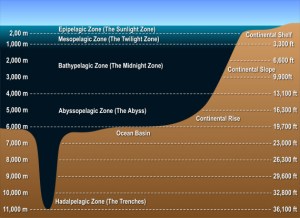
The little fellow was fast, and wily.
I was chasing him around the pool with a skimmer net, trying to herd him to the side of the pool where I had some chance of scooping him up with my hands. As the net approached he would kick to the eight foot deep bottom and then gracefully glide, legs in trail, along the contour of the bottom and sidewalls up to the edge of the pool. In dark water that tactic worked beautifully because his enemies could not see where he was going. But since he was in clear pool water I could see exactly where he was headed.
I’d sneak around the pool edge, out of his sight, and then grab for him as he floated at the surface. But he’d invariably see me in time to flip over and kick to the bottom again.
I had to admire his strength, speed and agility. He was clearly in his element. And besides that, he could breathe through his skin, absorbing oxygen from the water. Neat trick I thought, as I remembered various attempts by engineers to create artificial gills for humans — attempts that have all failed — so far.
Tadpoles have gills, but those gills are lost as the tadpoles metamorphose into frogs. Instead, frogs use a combination of lung breathing and skin breathing, called cutaneous respiration. Breathing through their skin allows them to remain underwater for months during the winter, when they are hibernating. However, when frogs are actively swimming, their oxygen demands are quite high, as you would expect. As the chase continued I had no idea how much or how little oxygen he could extract from the pool water.
For cutaneous respiration to work, frog skin has to stay moist, hence their desire to be close to water. But this frog was in the wrong water. I was about to pour chlorine into the pool, and if he didn’t get out of the pool, he wouldn’t survive. The chase was really in his best interest, but he didn’t know that of course; he was simply trying to avoid becoming my lunch.
So basically he never had time to take a breather. I figured at some point he’d grow tired from all the exercise and would allow me to catch him in the net and lift him out of the pool.
I was wrong. Before he quit swimming he apparently ran out of oxygen, in spite of the fact that he was getting oxygen from the water through his skin. But he wasn’t getting enough; he passed out.
Well, that sure made it easy to scoop him up.
Once I got him in my hands, I started frog CPR. No, I did not give him mouth to mouth ventilation. But I did give his little chest tiny squeezes, thinking that would do him some good. Apparently it didn’t; he never regained consciousness. 
I buried him in my garden with all the solemnity due a frog, and vowed over his little green body that I’d do better with keeping the chlorine levels up so future frogs would not be attracted to the pool. Of course that was for my benefit as well, because where frogs are, water moccasins are not far behind.
I think it’s tough being a frog.
I mostly kept to my promise, but inevitably, another leopard frog or two attempted to take up residence in my concrete lined pond.
Being a scientist, I decided to conduct an experiment. I repeated my earlier, potentially deadly chases, but this time I reacted instantly when the frogs passed out. Soon as they went limp I scooped them up with my net and laid them in the grass. Before long they recovered and started frog-hopping away. Speed was of the essence in their rescue, and quick reactions on my part worked to keep the frogs alive.
So yes, frogs can breathe through their skin, absorbing oxygen and releasing carbon dioxide, but only enough to support resting needs. When they are active, they must supplement gas exchange by gulping air into their lungs. Now I know.
(The loss of the first frog was an accident, not animal cruelty! Do not repeat this in the name of science, because it also is not science.)
I’ve since learned that I’m not the only person with frog-in-pool problems, and conveniently, small animal escape devices are available. Here’s a video of one that allows frogs to self-rescue without being dependent on any near-death escapes foisted upon them by me. (I’m not associated with the manufacturers or dealers in any way.)
[youtube id=”NlNbpBDRuMc” w=”500″ h=”400″]






























